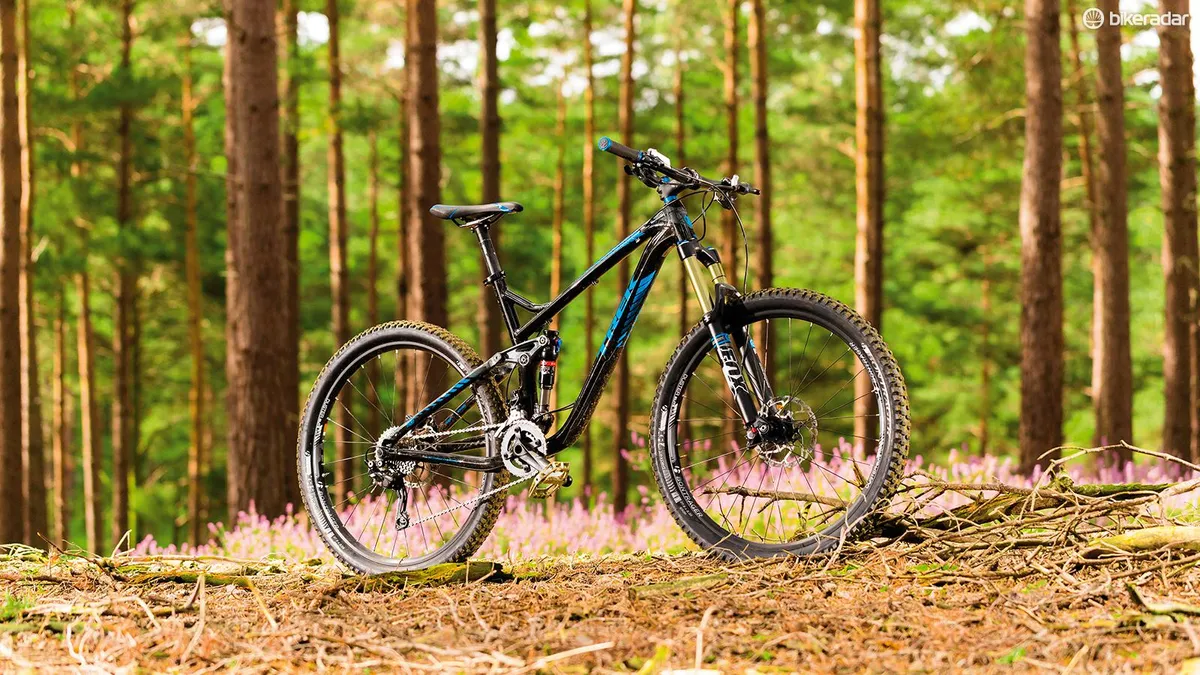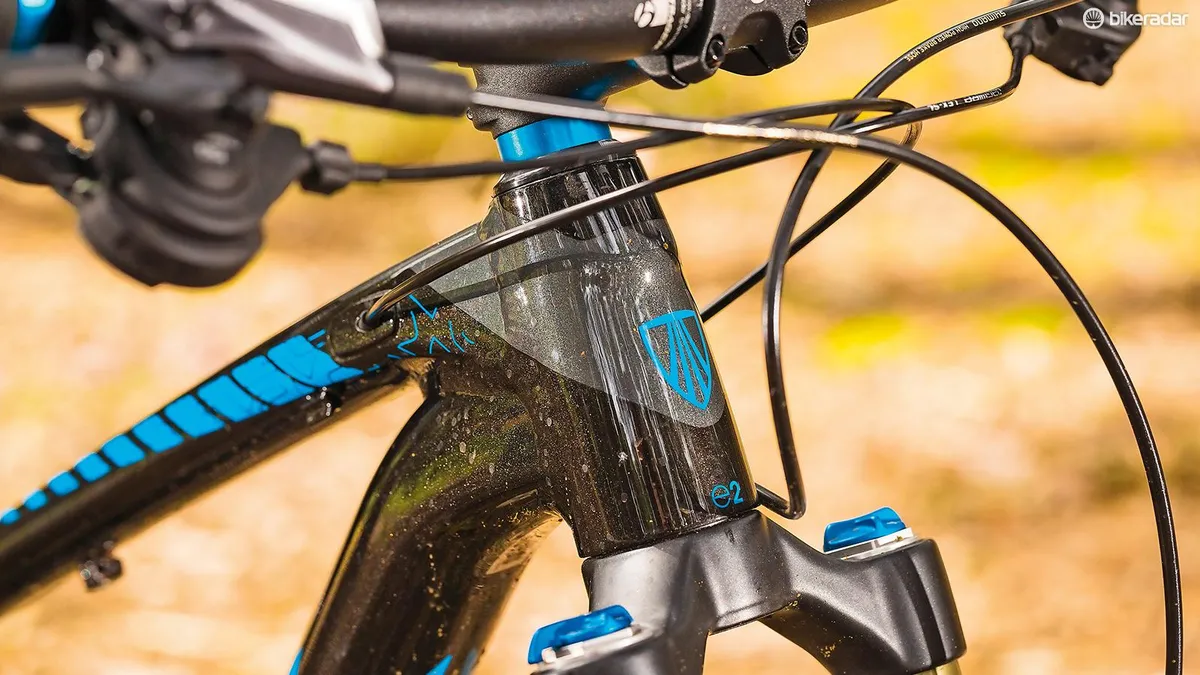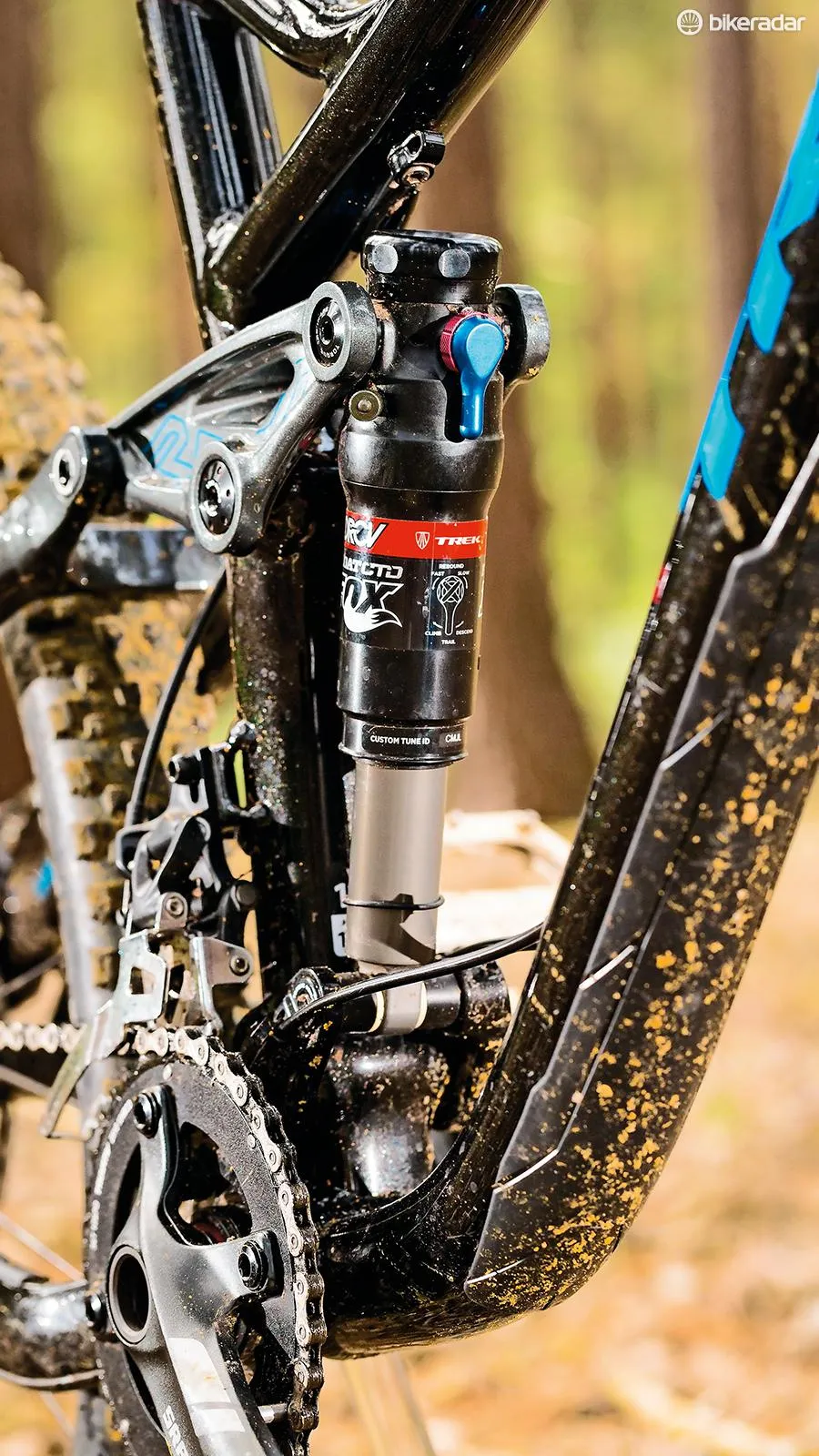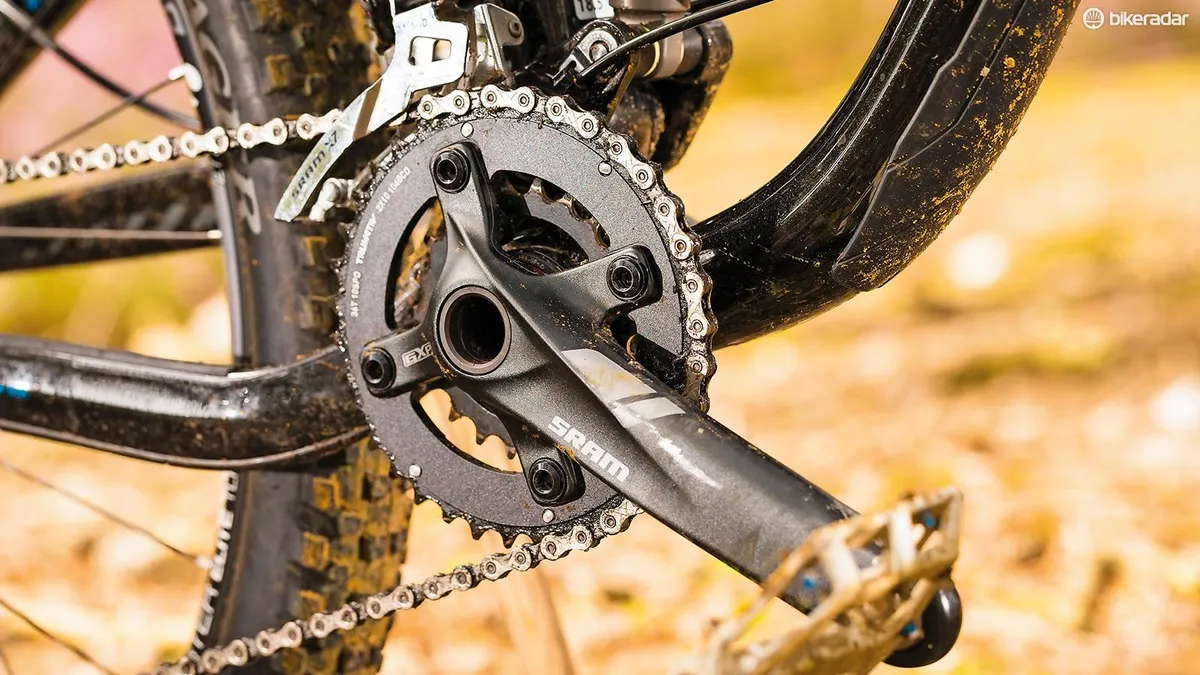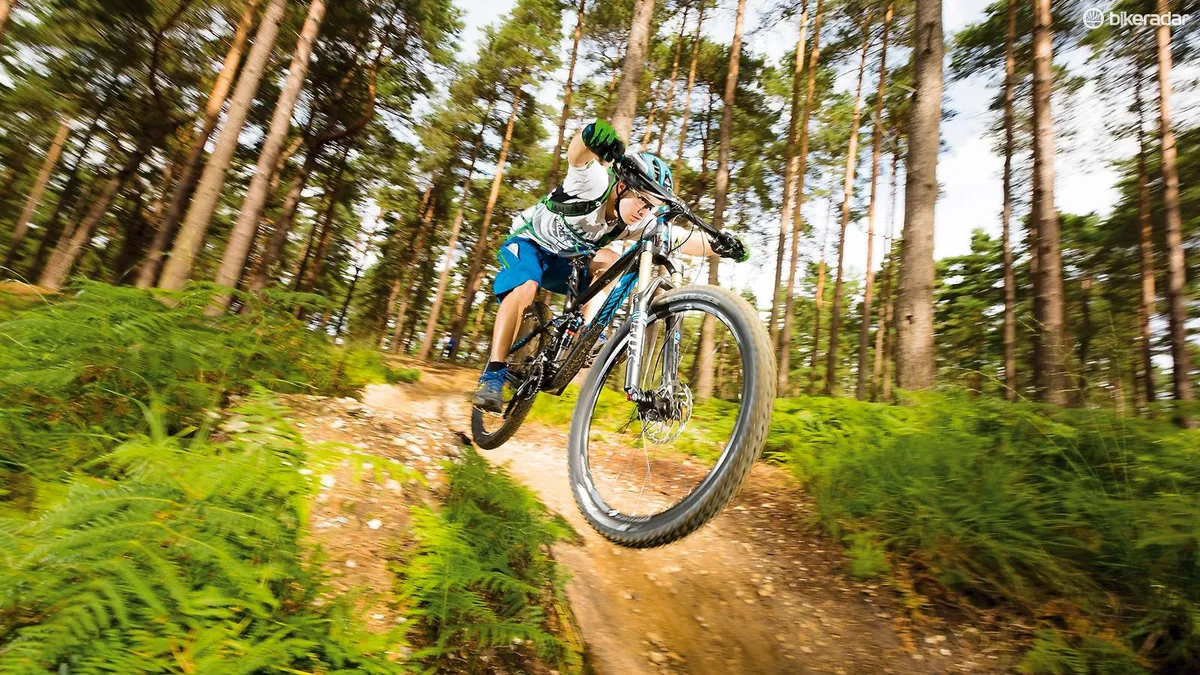Trek’s Remedy is big brother to its popular 120mm Fuel EX trail bike, and Trek is one of the biggest traditional brands around. The latest Remedy 8 rolls on 650b wheels and 140mm of travel, having begun life with 26in and 160mm.
- Highs: The Trek blasts rough lines and the Shimano kit is strong
- Lows: Its weight and uninspiring dampers slow it both up and down
- Buy If: You ride tight, rough stuff and want a bike that will last
Frame and equipment: crunching the numbers
The Remedy’s numbers are totally current, if you take geometry upstarts like Bird and Mondraker out of the equation. Our Large (19.5in) offers a 618mm effective top tube, which in combination with the 70mm Bontrager stem, gives plenty of room for a six-foot rider to breathe. At 435mm the chainstays are identical to Bird’s Aeris, but the Trek’s 1166mm wheelbase reveals a front-centre a whopping 41mm shorter – meaning you’ll get faster steering and lesser stability when it’s steep.
That head angle is a conservative 67.5 degrees, and while the Mino Link geometry adjustment chip can alter that, it’s only by 0.5 degrees and in the wrong direction – steeper, to 68 degrees. It’s not a bike that feels particularly slack, though a 50mm stem helps you master the 750mm bars.
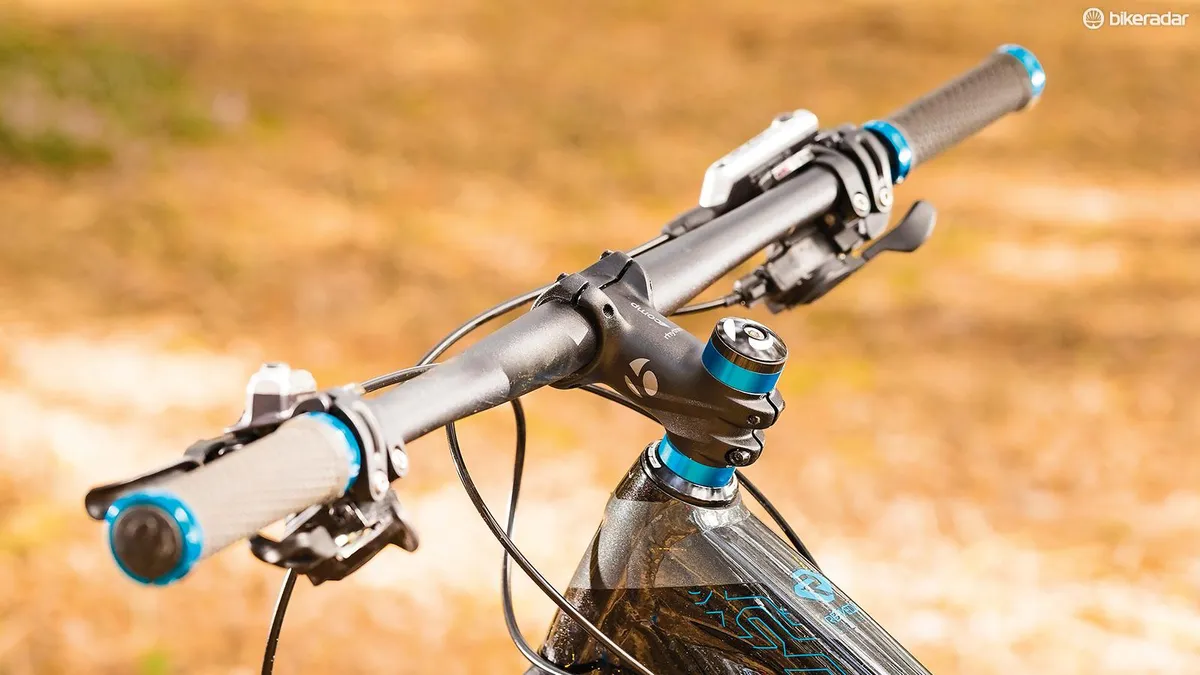
We found the steering more controlled with a 50mm stem in place of the 70mm standard one
You could get a longer front triangle by sizing up, but as with many frames the seat tubes get unnecessarily tall, especially if you’re fitting a dropper – this has Stealth routing but a standard post, but as it’s already 13.9kg (30.7lb) that may be a blessing. Swap the twin steel rings and solid Shimano crank for a single ring and hollow arms and you could drop nearly 700g easily.
Ride and handling: good in a tight spot
Despite Trek’s DRCV Fox shock having only the basic Evolution damping, its Full Floater suspension chews smoothly through horrible terrain. We sent it through big, fast rock gardens with low tyre pressures expecting hideous pinch punctures, but came through unscathed and impressed.
A downside is the lack of pop if you want to pump through berms, dips and jumps rather than blast over rubble. It’s pretty linear, with little platform to push against.
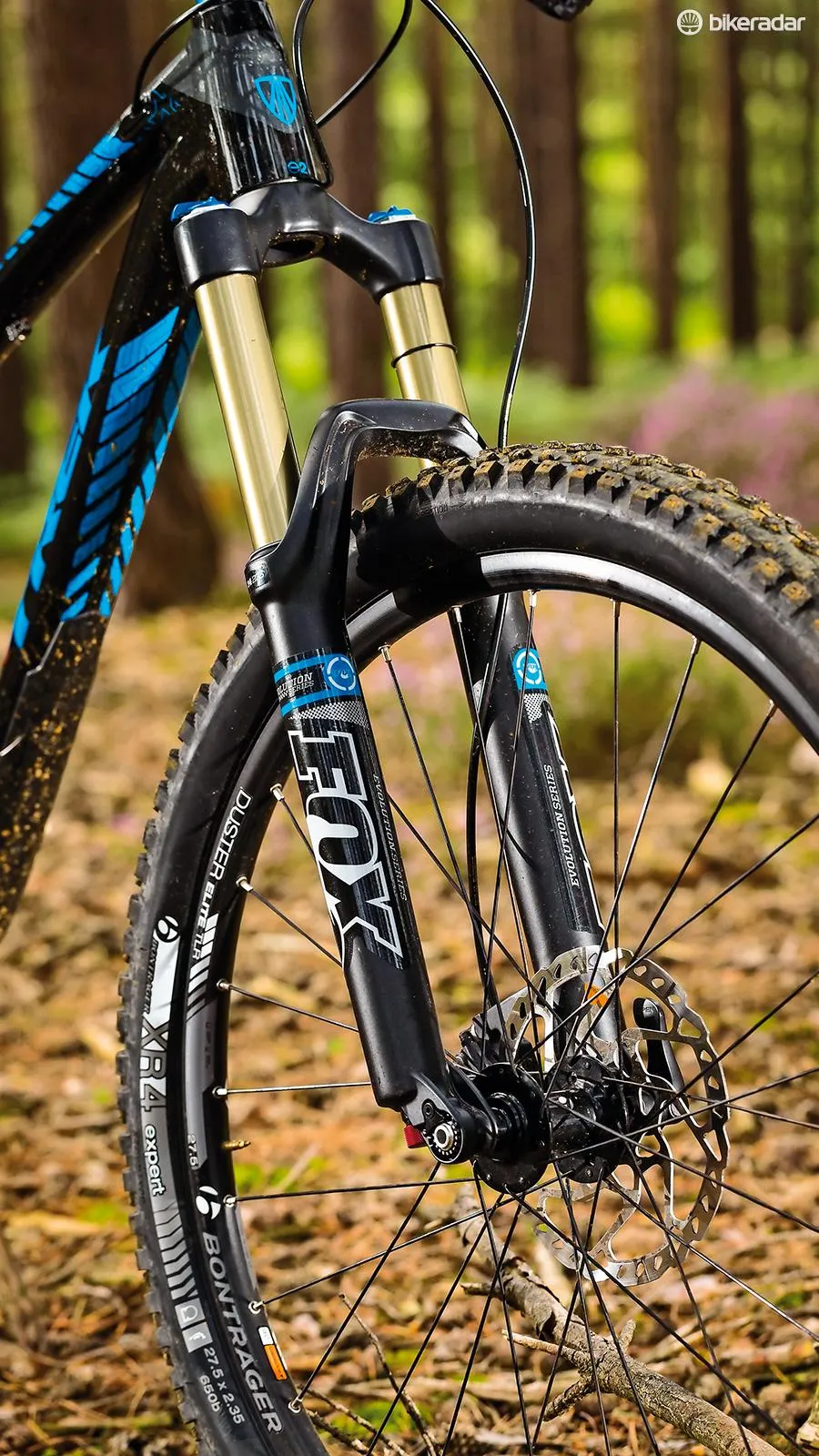
DRCV has been dropped from the fork, which is now a standard Fox 34 Float CTD set to 140mm. Disappointingly, it only has the basic Evolution damping
Trek’s ditched the DRCV up front, as it says Fox’s standard forks now have the spring curve it wants. It’s a plush performer and good on smoother ground, but the spiky Evolution damper is unsubtle – use the extra compression damping of Trail on rough, fast ground and it can actually blur your vision.
It’s great in very tight corners, where it snaps through with alacrity, and Bontrager’s aggressive XR4 front/faster XR3 rear tyre combo is confident in anything bar deep mud. The saddle and lock-on grips are good too, so contact points are sorted.
